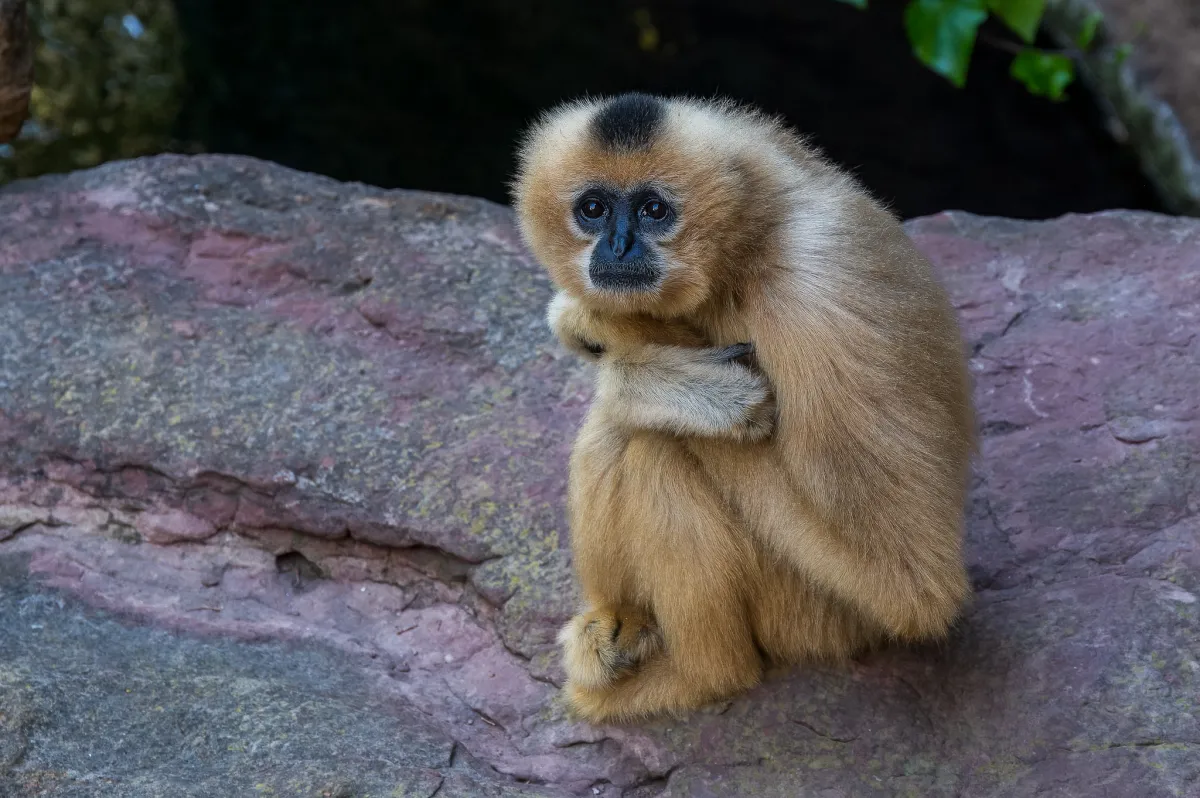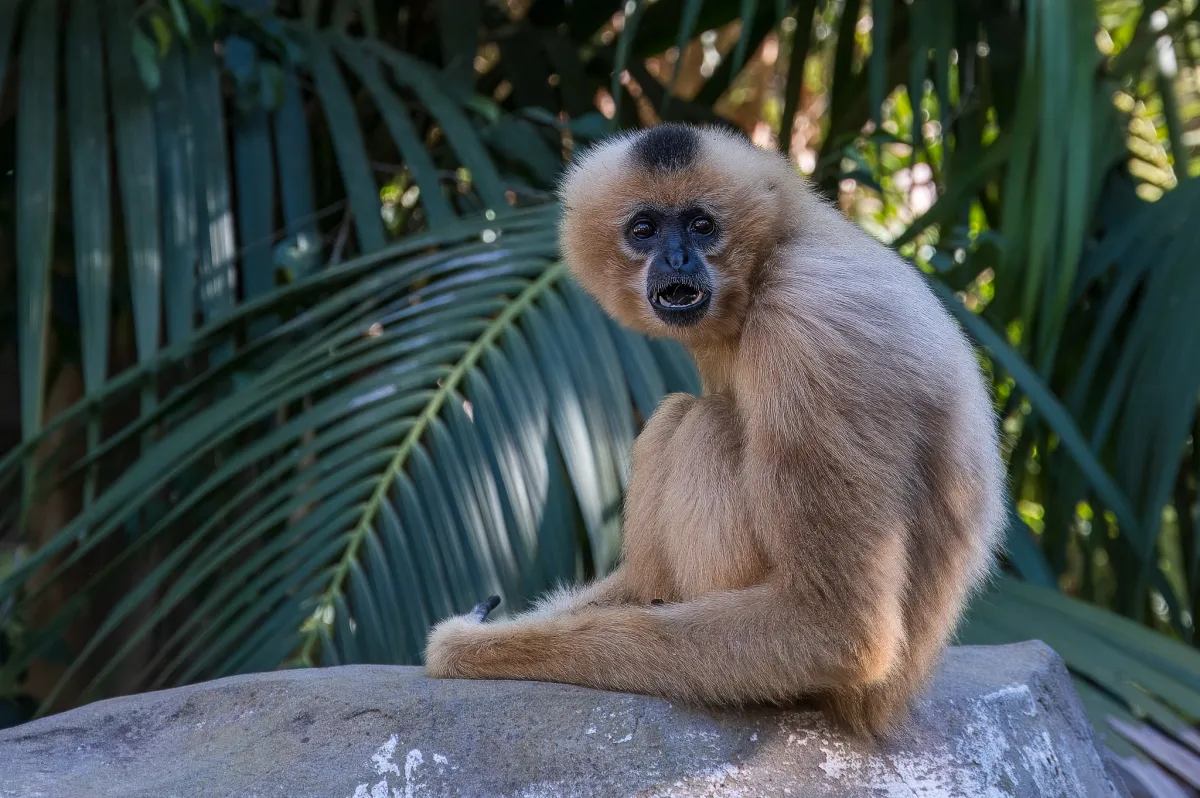The Yellow-cheeked gibbon, Nomascus gabriellae, also known as the Golden-cheeked gibbon, is an endangered primate species found in the tropical rainforests of Southeast Asia. These fascinating animals are known for their distinctive vocalizations, swinging abilities, and playful behavior.
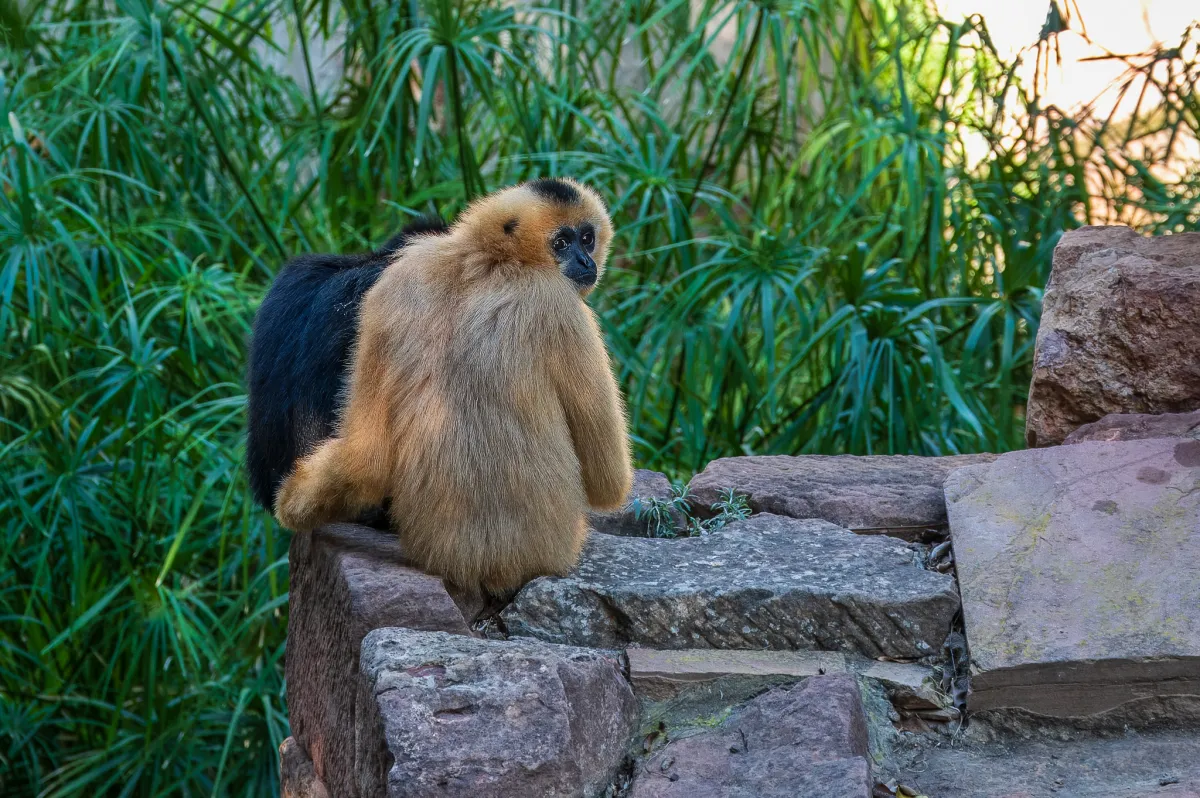
Appearance and Physical Characteristics
The Yellow-cheeked gibbon is a medium-sized primate, with a length of around 45-60 centimeters and a weight of approximately 5-7 kilograms. The yellow-cheeked gibbon is born blond and later turns black. Males carry this colouring through their lifespan and have the distinguishing golden cheeks. Females are born blonde to blend into their mother’s fur but they later turn black. Females turn back to blond at sexual maturity, keeping only a black cap on the top of their heads The gibbon also has long arms and legs, which are specially adapted for swinging through the trees.
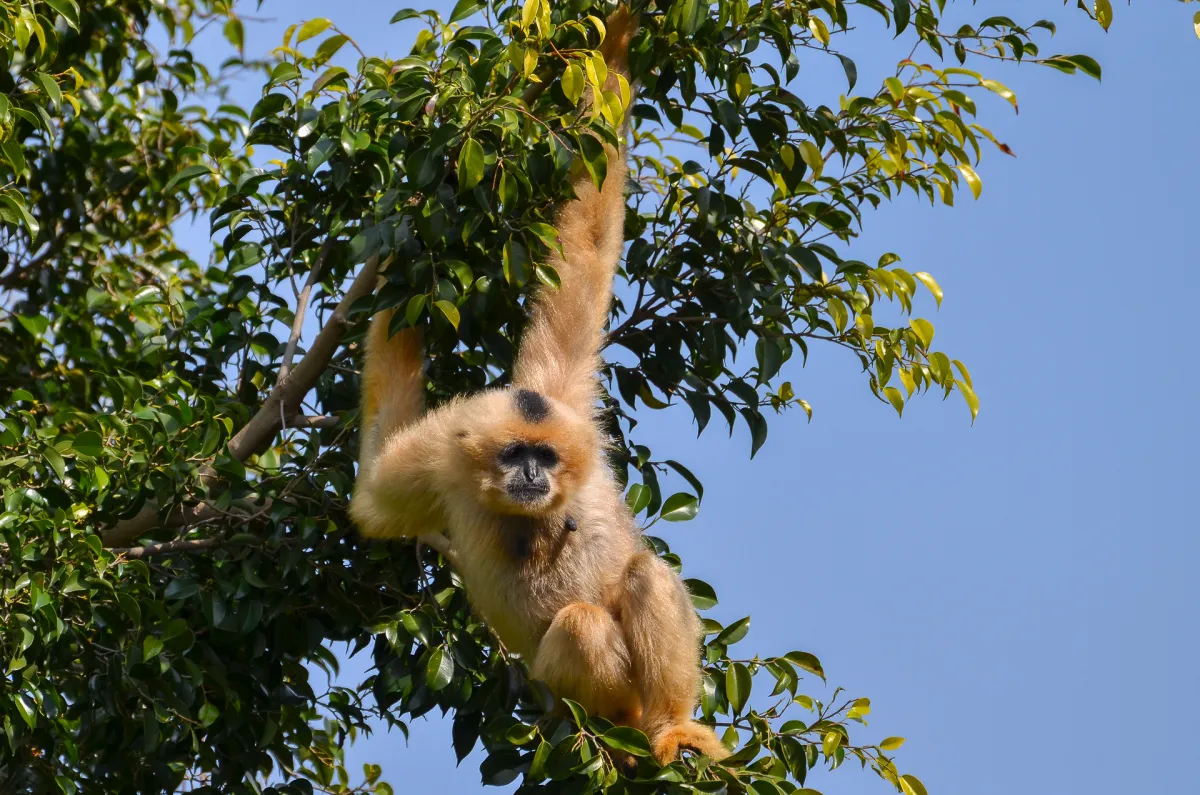
Behaviour
Yellow-cheeked gibbons are arboreal animals, spending most of their time in the treetops of the rainforest canopy. They are primarily active during the day and spend their time swinging, leaping, and climbing through the trees. They are also known for their loud and complex vocalizations, which can be heard over long distances and are used to communicate with other gibbons in their group.
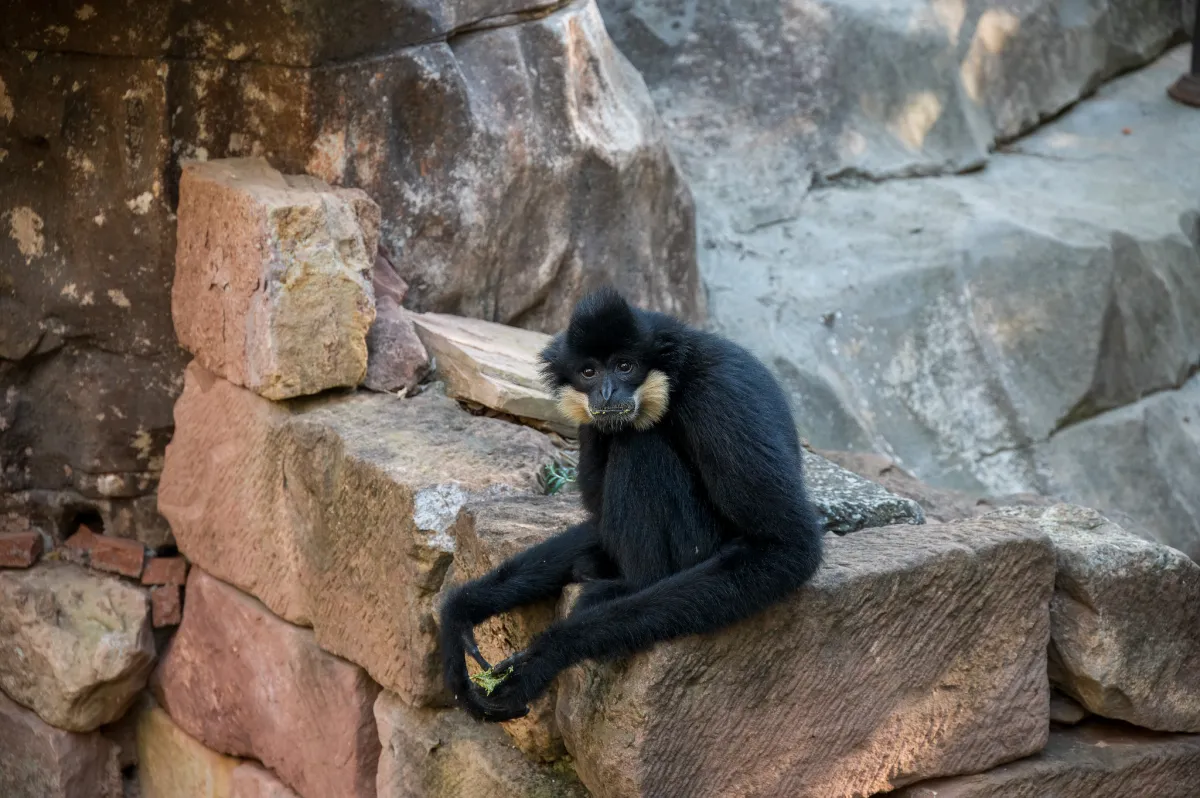
Yellow-cheeked gibbons are social animals and live in small family groups consisting of a mated pair and their offspring. They are monogamous, forming strong bonds with their partner, and will mate for life. The pair will also work together to defend their territory and raise their young.
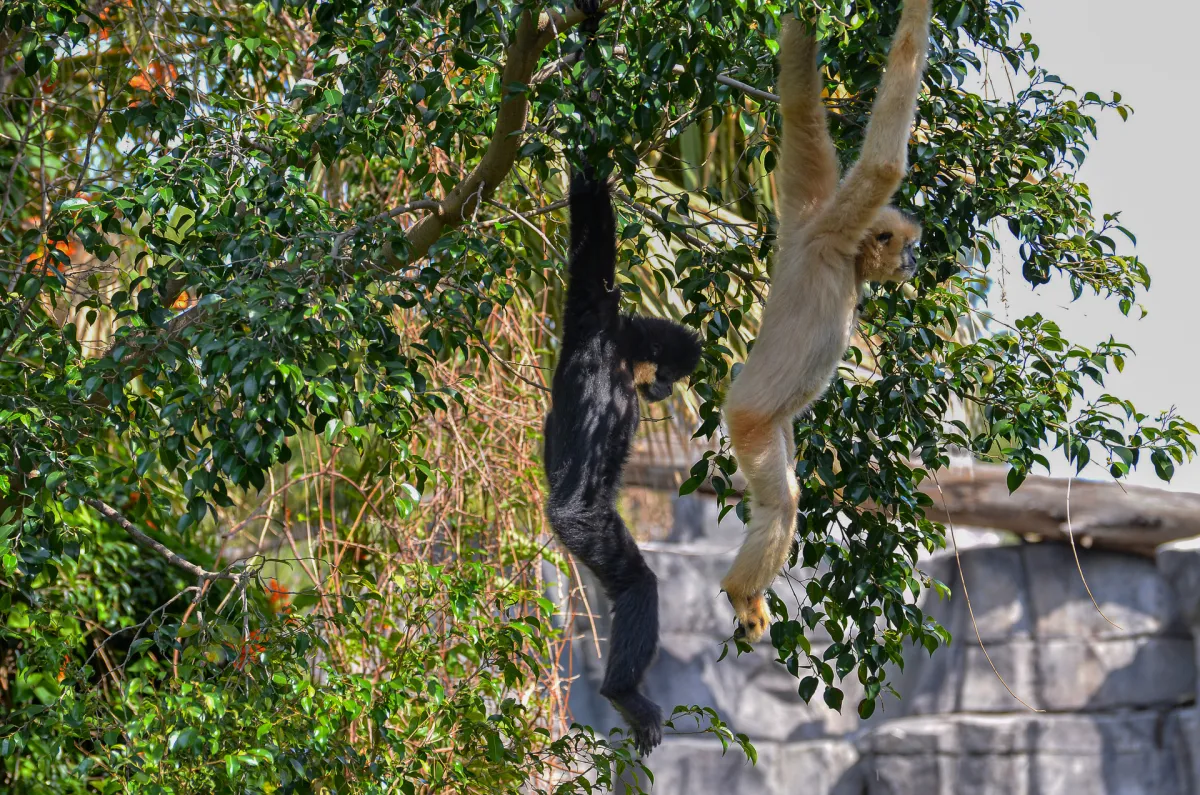
Conservation Status
The Yellow-cheeked gibbon is listed as critically endangered by the International Union for Conservation of Nature (IUCN) due to habitat loss, hunting, and the illegal pet trade. Deforestation and land-use changes are the primary threats to their survival, as their rainforest habitat continues to be destroyed for agriculture, logging, and development. Additionally, gibbons are sometimes hunted for their meat and body parts, and their young are captured and sold as pets.
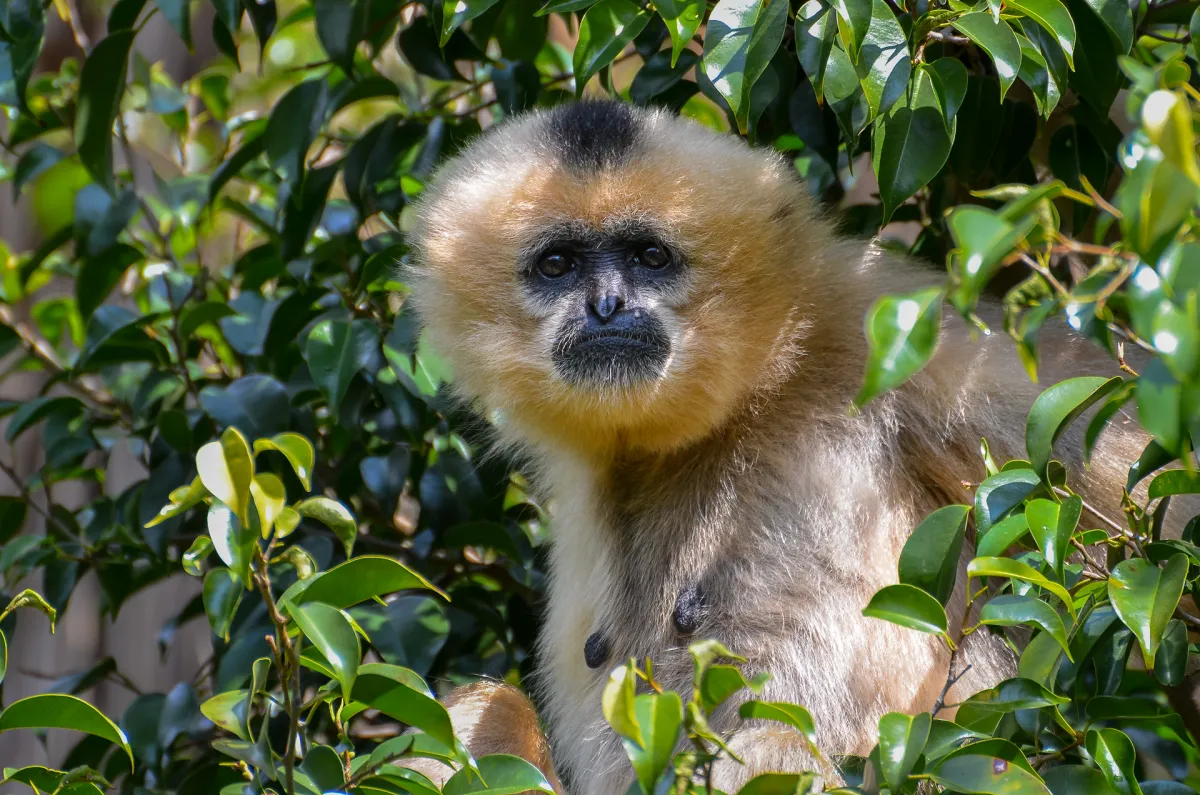
Efforts are underway to protect the remaining populations of Yellow-cheeked gibbons. These include the creation of protected areas, conservation education programs, and initiatives to promote sustainable forestry and agriculture practices that preserve habitat.
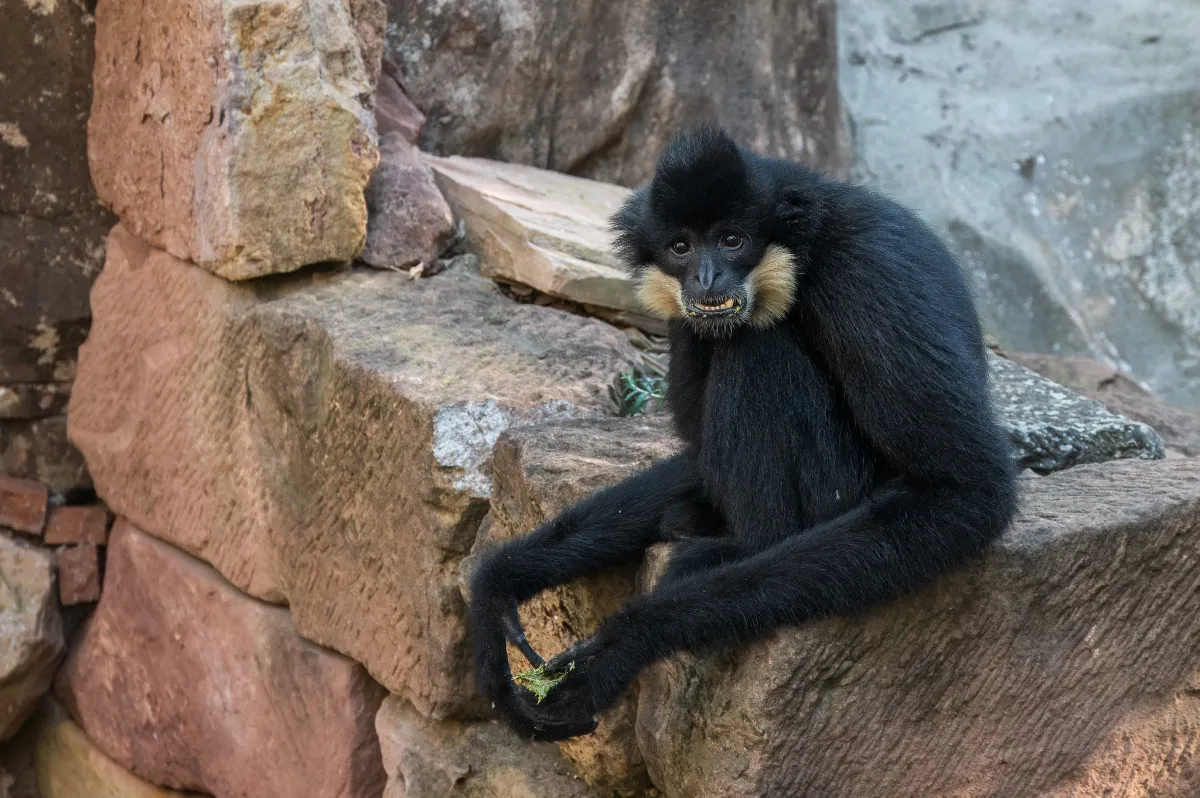
Interesting Facts
- Yellow-cheeked gibbons are one of the few species of primates that form monogamous pairs and mate for life.
- Gibbons are the only apes, aside from humans, that are known to regularly use bipedalism, or walking on two legs, to move through their environment.
- The gibbon’s distinctive vocalizations are often described as “songs,” with different patterns and melodies used to communicate with other members of their group.
- Yellow-cheeked gibbons are important seed dispersers, helping to maintain the health and diversity of the rainforest ecosystem.
